Tasting notes of the magnificent Unico 2014, Valbuena 5° 2019, Alión 2020 and others follows but first – putting the wines in context, both in the vineyards and winery in a behind-the-scenes visit in November 2019.
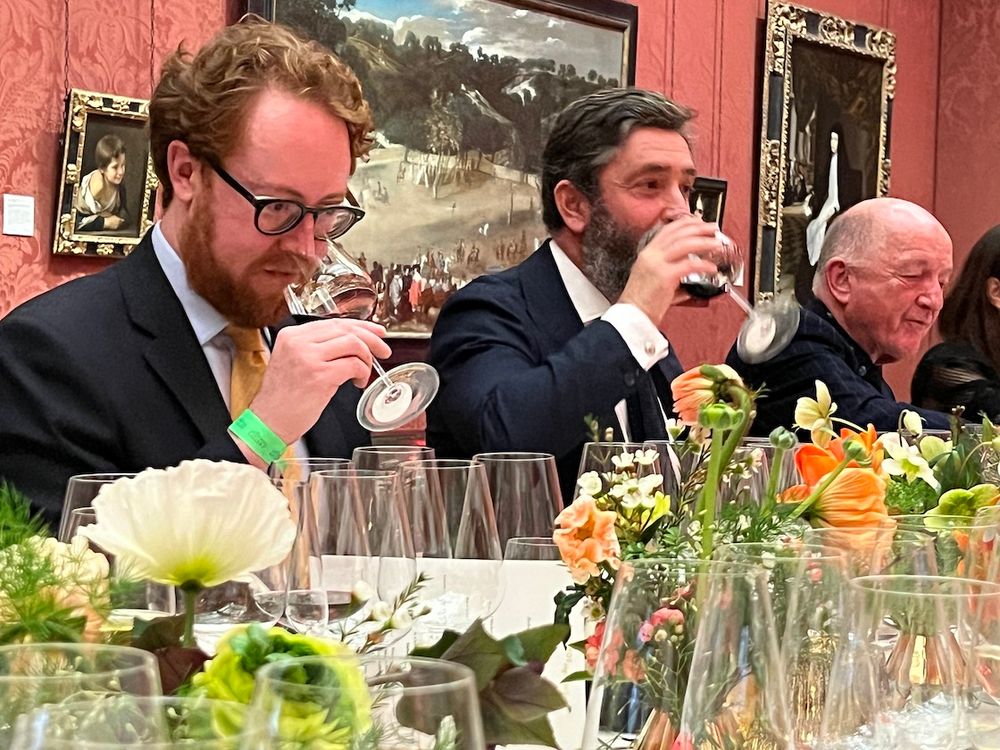
Tasting Unico 2014 in the Spanish Room, January 23, 2024. Alex Hunt MW, purchasing director Berkmann, Gonzalo Iturriaga de Juan, group technical director Vega Sicilia, Oz Clarke (l-r)
It’s not for nothing that you refer to Vega-Sicilia’s home in Valbuena de Duero as its headquarters. As you turn off from the busy main road to Valladovid you hit a security gate that feels more like a military facility than home to some of the world’s most exotic and mysterious wines. We wait almost five minutes as the driver’s details are triple-checked and everyone’s name in the vehicle. I suspect there are open prisons that are easier to get out of.
It’s understandable – my back-of-a-fag-packet calculation has about £300 million worth of Unico here at various stage of maturation, not even taking into account the bottles back vintages or second and third wines.
The site is massive, functional, impersonal and perishingly cold – it’s only November and the wind is already getting lazy, going through you rather than around. It’s only the topiary and Nineteenth Century villa that gives clues to the artistry and vision of what is being produced here.
I am here to taste Vega-Sicilia’s new releases including the much-anticipated Unico 2010, but first get to see the vines and winery with Enrique Macias, the director of viticulture who sits on the main board.
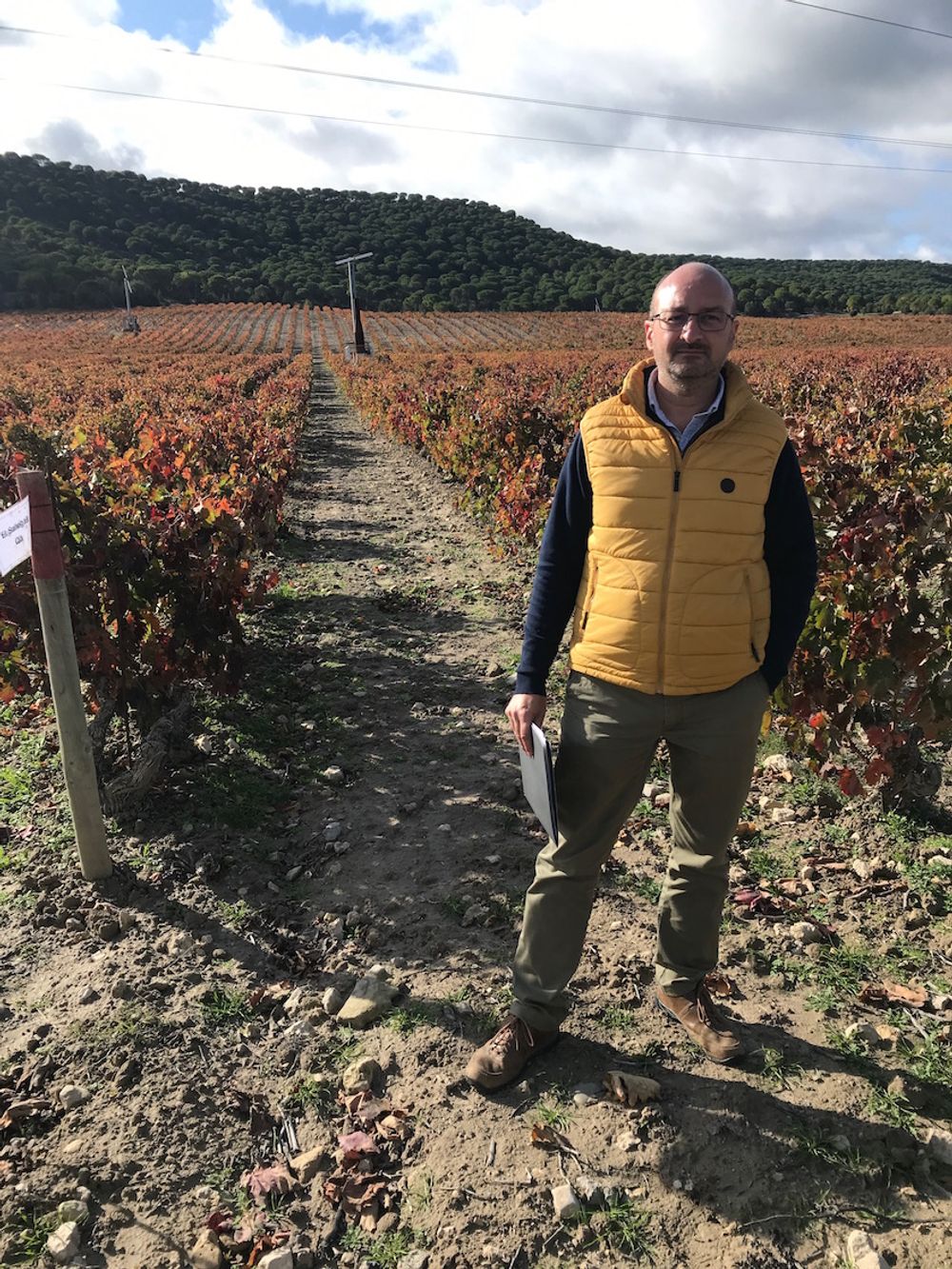
Enrique Macias, the director of viticulture, in front of vines that have a minimum age of 40 years, November 2019
Vega-Sicilia has been on this site for 155 years and, until the denomination of Ribera del Duero was created in 1982, was one of the few wineries bottling its own wines in the region.
The Vega-Sicilia site is 1000 hectares in total with 210 hectares under vine, 40 of these hectares are used to produce Unico, 50 hectares go to make Alion, the modern interpretation of Ribera del Duero made at the company’s sister winery. In all there are 23 different clones of Tinto Fino (Tempranillo) in the vineyards.
The vineyards are all roughly 700m above sea level, are planted at 2,222 vines per hectare with yield being 3,600 kilos of fruit per hectare.
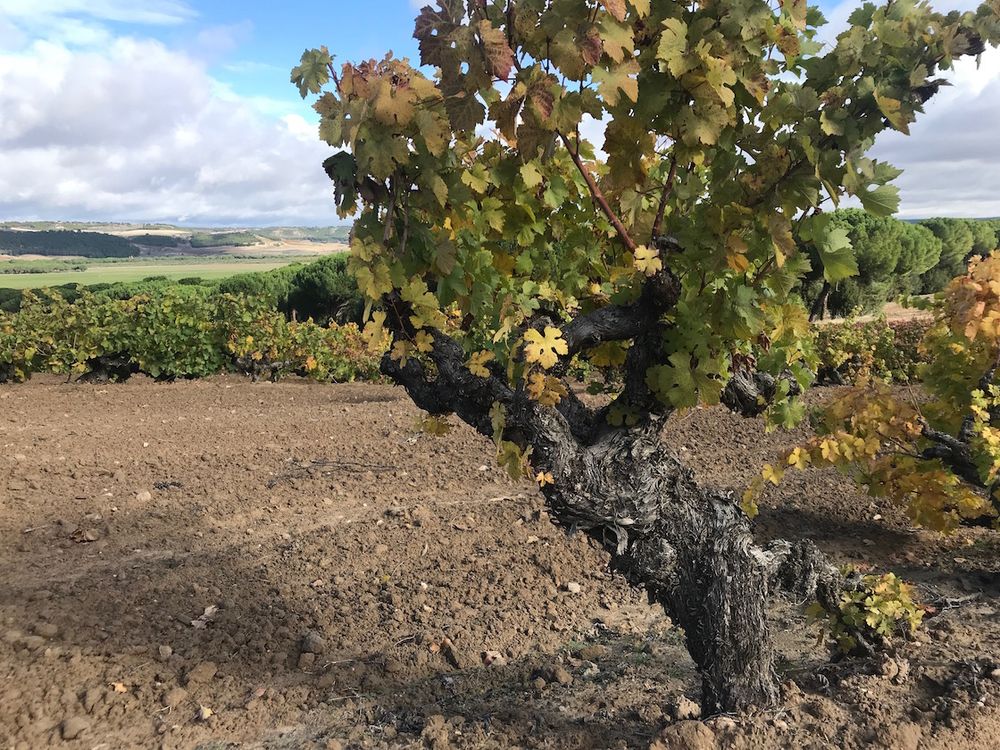
There are also 19 different soil types on the site which have been divided into 57 plots. In one area of the vineyard towards the forest you find the oldest vines on the estate – this one pictured above is at least 110 years old – and this ancient vineyard contains 22 different rare varieties of grape. It is used primarily for viticultural study only.
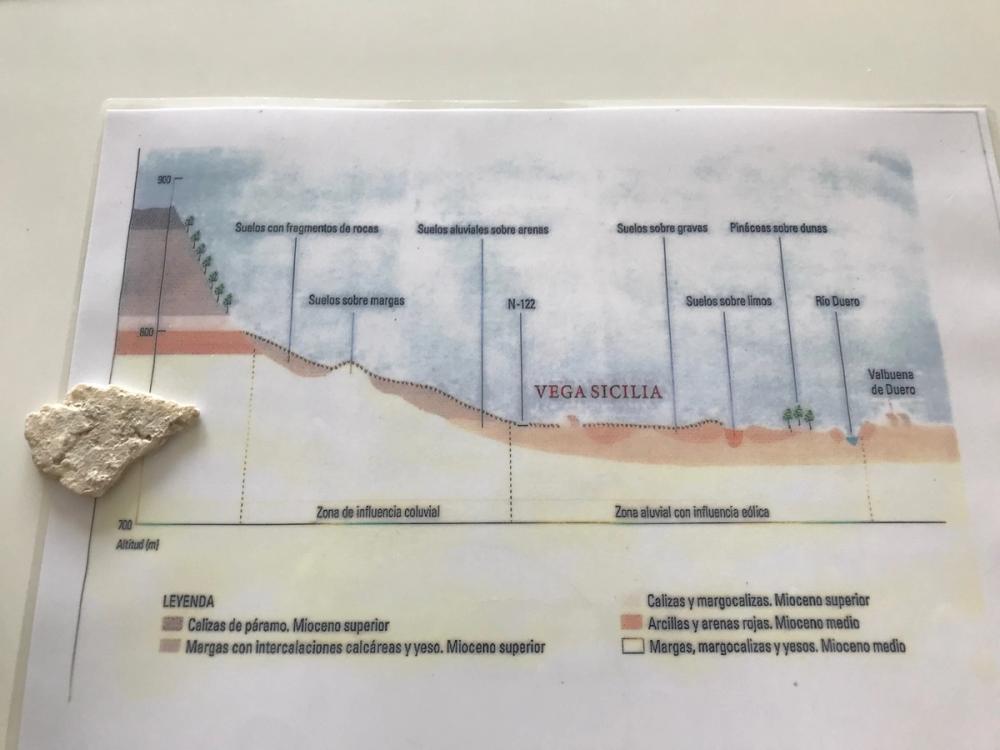
It is the soil that is rich in gypsum, located on the upper slope (below the tree line), where the vines used for Unico are located. These soils are old lake beds, and the gypsum behaves like a sponge – good for alleviating water stress with the vines – and is also important for the wine’s minerality.
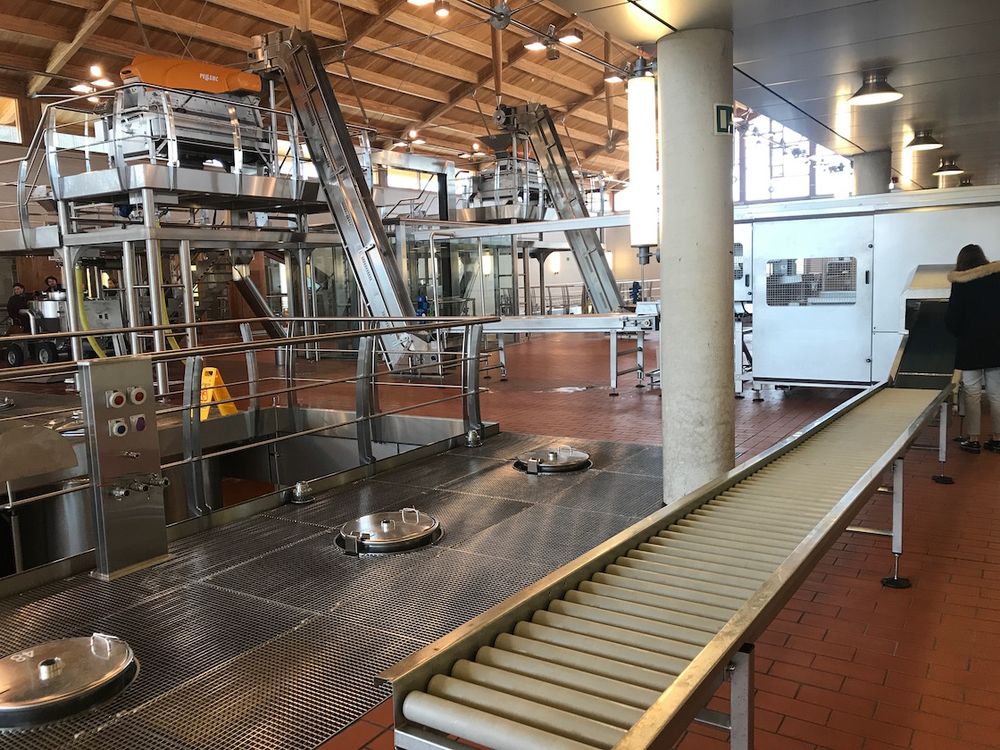
The new winery was opened in 2010 and feels like NASA inside rather than a place for making wine. There are 81 fermentation tanks that correspond to the different plots in the estate. Space-age sorting tables, gravity systems for filling the vats, a ‘wine lift’ to move fermented wines.
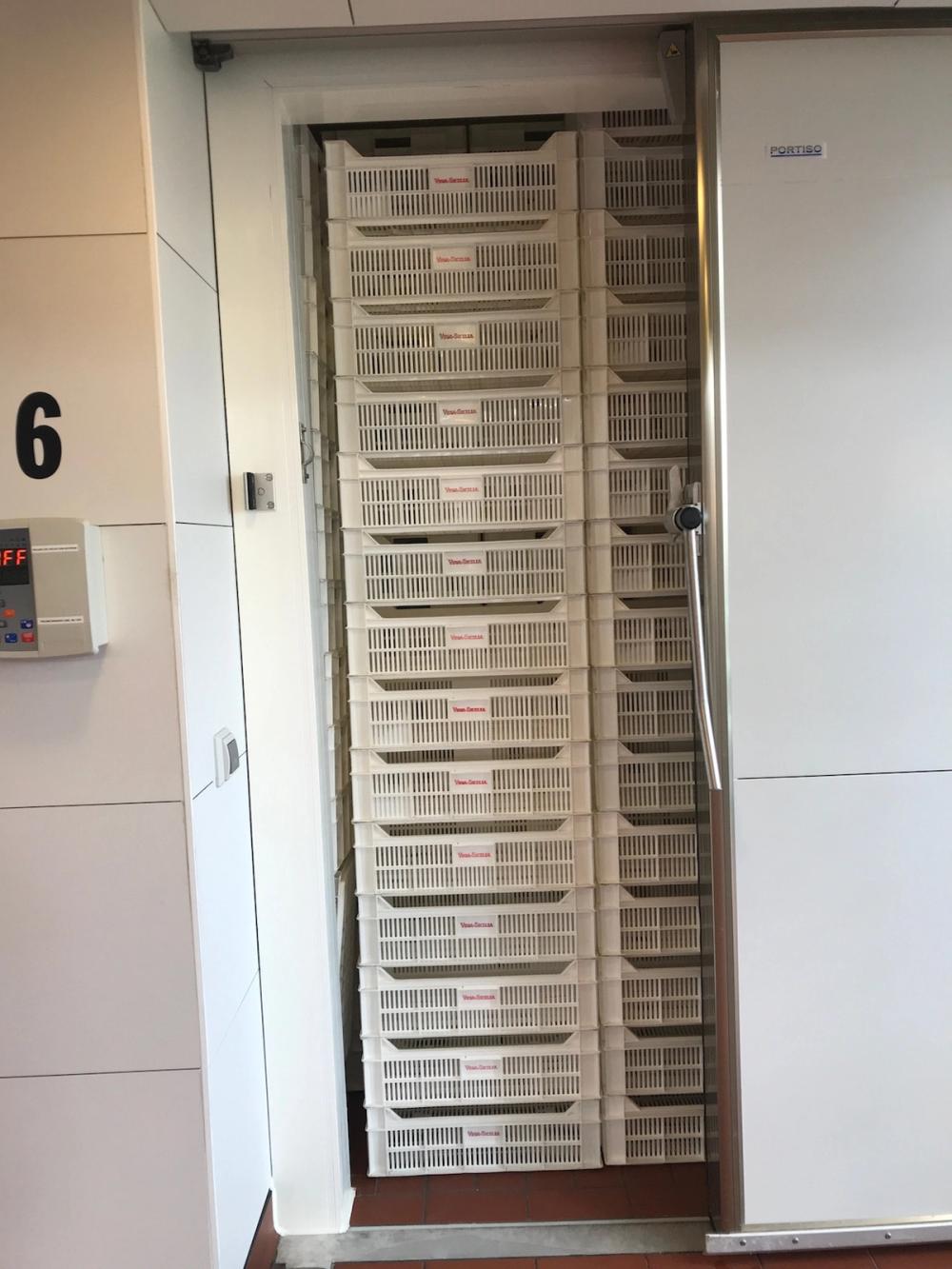
There are cold chambers designed impeccably to take exactly the right amount of corporate-branded fruit trays.
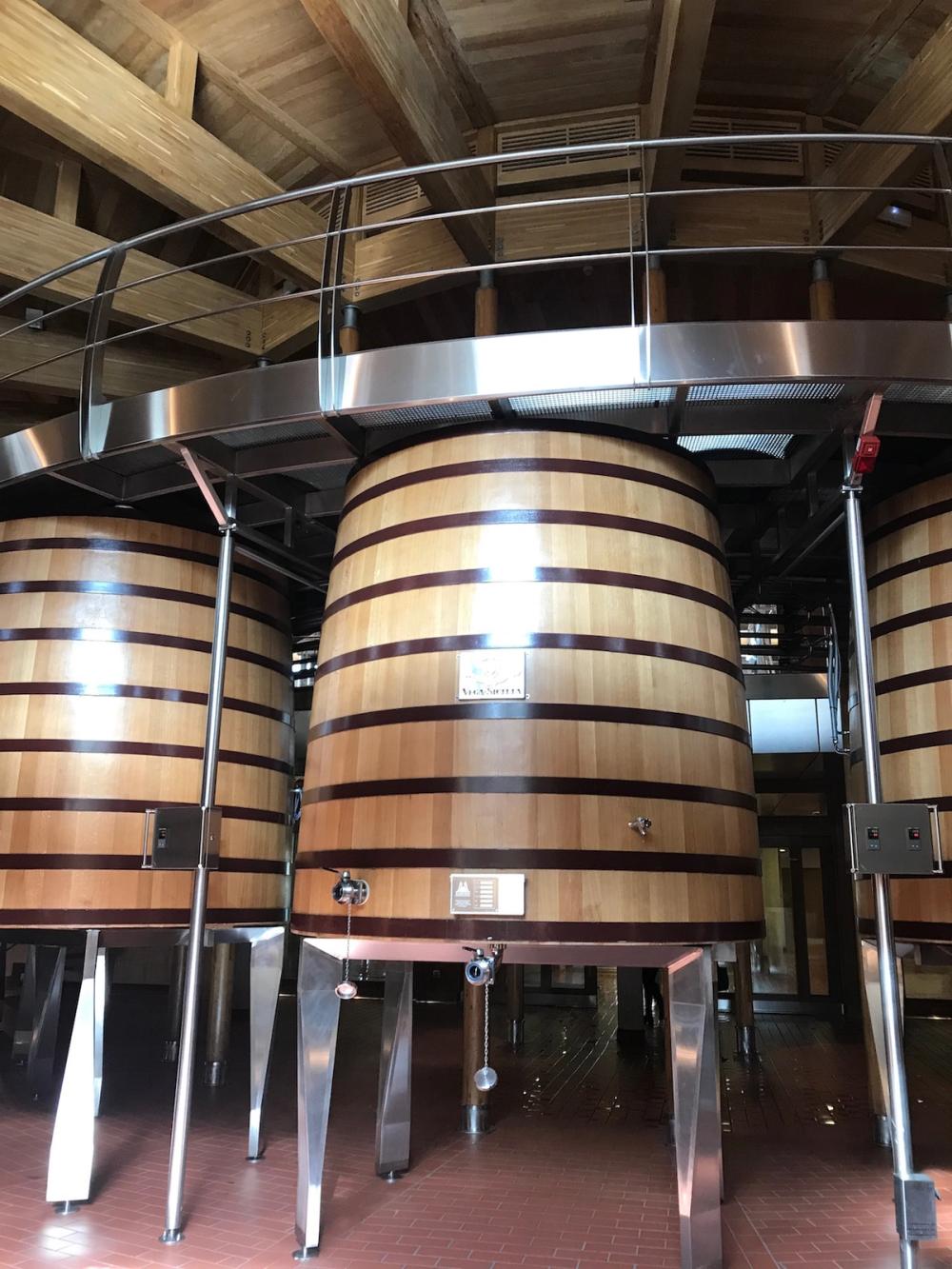
Some say that it is the mix of traditional and modern winemaking techniques, particularly the ageing process that makes Unico so unique and distinctive. It is aged for 10 years in a variety of different size formats, French and American oak and new and used barrels – each batch treated separately. So one vintage, for example, could spend 15 months in 20,000-litre tanks, 25 months in new barrels, 17 months in used barrels and then a further 26 months in the big oak vats. The remaining three years in bottle.

In recent years, however, the style has changed towards fresher wines that see less oak with the wines having more velvety tannins and so, instead of spending the last three years in bottle, they are spending between four and five years out of the 10.
The styles of Vega-Sicilia’s second and third wines are also changing. With Valbuena 5° (named because it is aged like a Rioja Gran Reserva for five years) the winemakers are looking at going back to steel after the first year in oak, they are also experimenting more with the size of the vats. With Alion they are starting to use 5% of the vinification in cement tank from the 2018 vintage and some American oak.
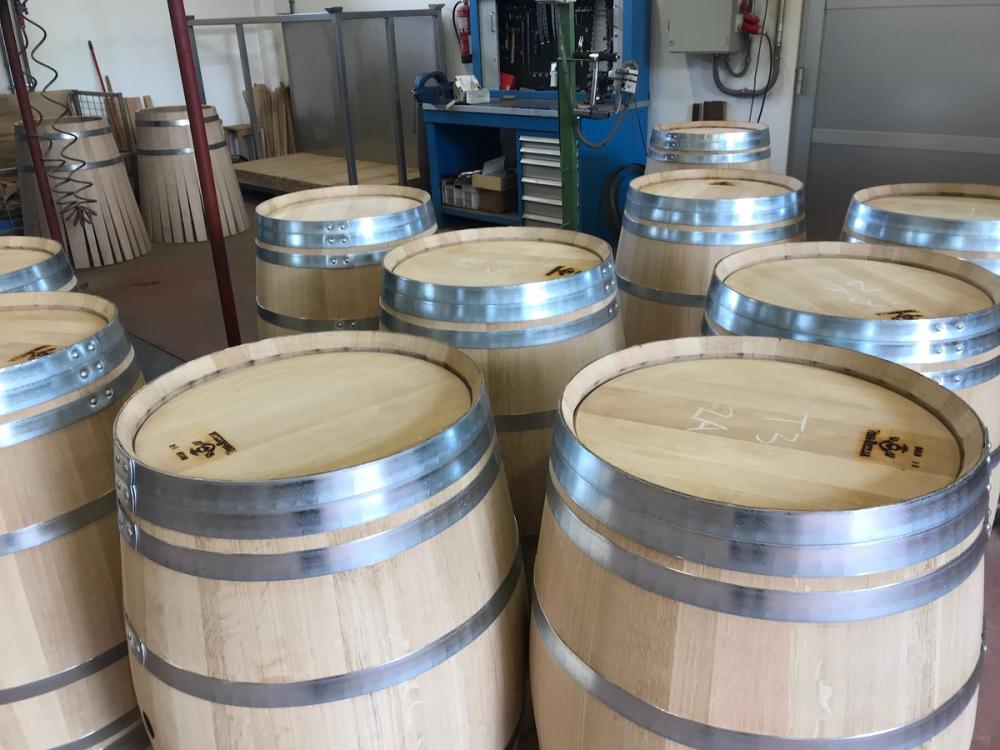
Vega-Sicilia has its own cooperage where it produces a third of the French oak barrels used at the winery. Part of the rationale is that it allows the winemakers to toast the barrels according to each vintage of wine after it has been fermented. Brand new oak is the norm with no barrels used over six years old.
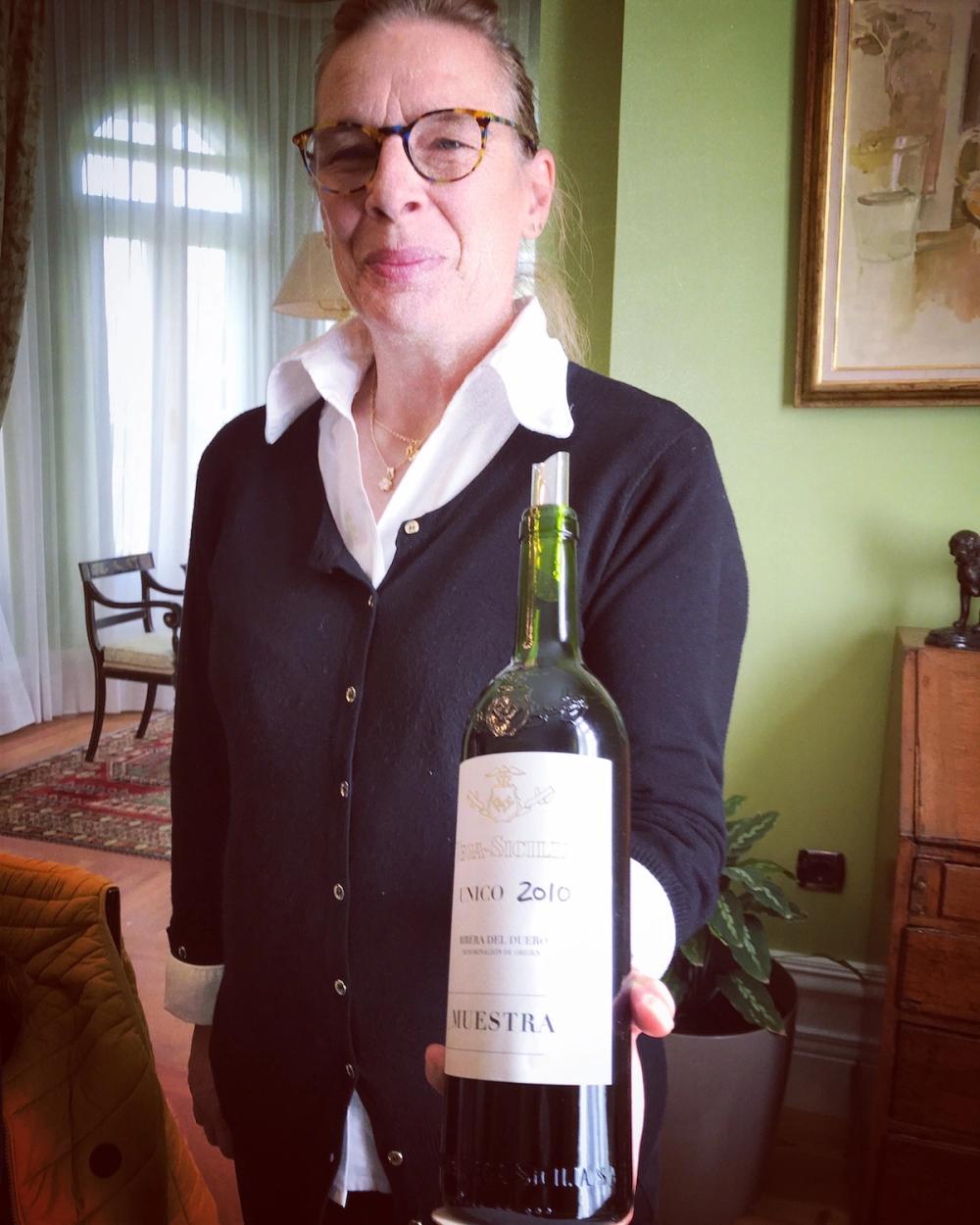
In the drawing room of the villa, an assistant arrives with the new vintage of Unico
There are three wines produced at Vega-Sicilia. Unico (currently 90,000 bottles), Unico Reserva Especial (15,000 bottles) a blend of three different Unico vintages, and Valbuena 5° (180,000 bottles); given the scale of the winery the output seems modest by today’s standards
Vega-Siclia is part of a group owned by the Álvarez family that also owns Alión (250,000 bottles), a sister Ribera del Duero bodega formed in 1986, Pintia formed in 2001 in Toro, Oremus formed in Hungary’s Tokaji region, and 50% of Macán, a joint venture with Benjamin de Rothschild in Rioja.

One shelf of Unico vintages in the drinks cabinet of the drawing room
There’s always a frisson of excitement about a new release of Unico because, quite apart from it being one of Spain’s greatest wines it is also hugely variable – the wines are markedly different one release to the next – which partly explains some of its attraction.
About last night
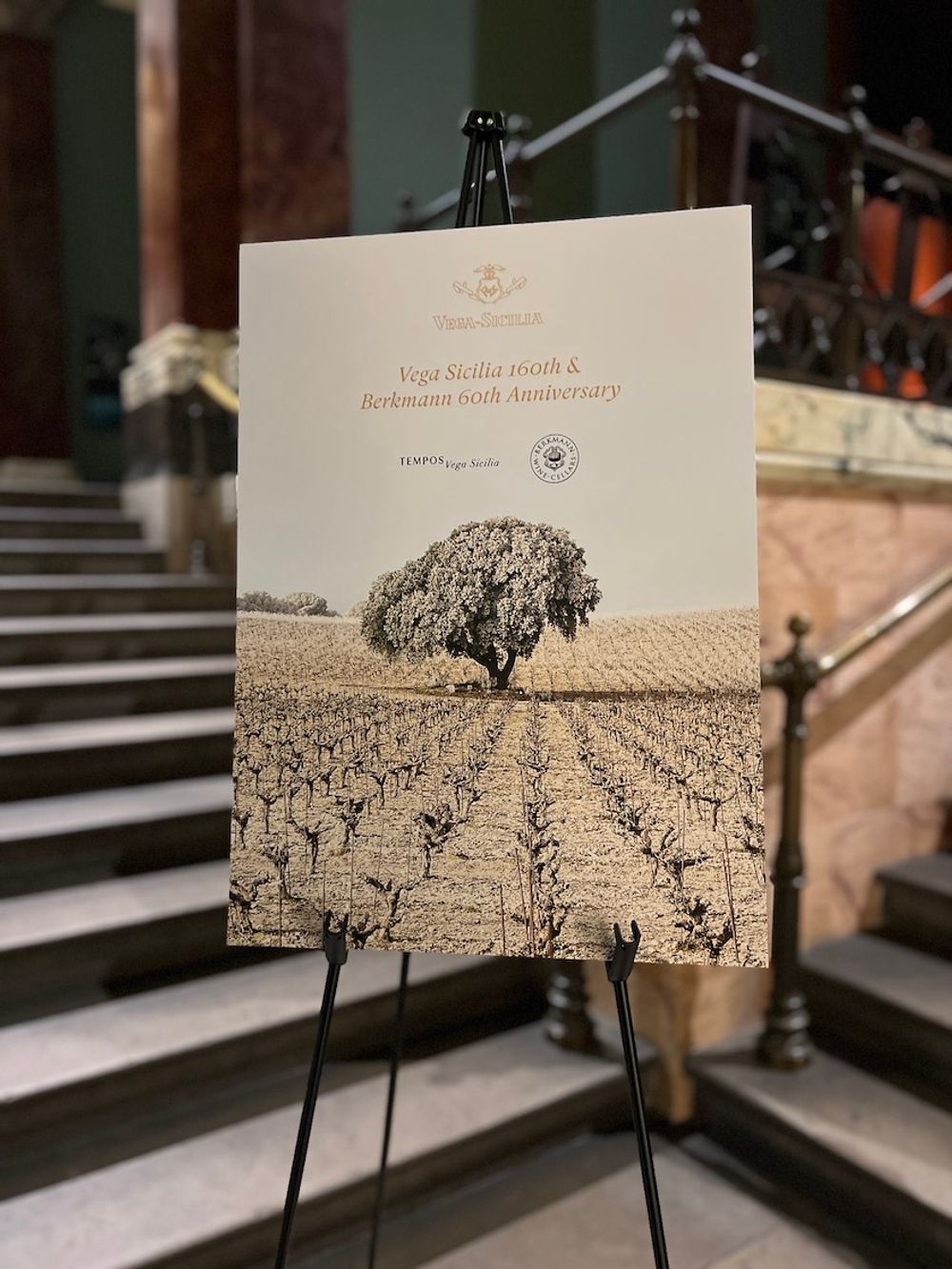
Unico 2014 launch, National Gallery, January 23, 2024
The worlds of wine and art have always had a symbiotic relationship, one that was writ large in the Spanish Room at the National Gallery where Vega Sicilia launched Unico 2014 alongside the other wines in its portfolio.
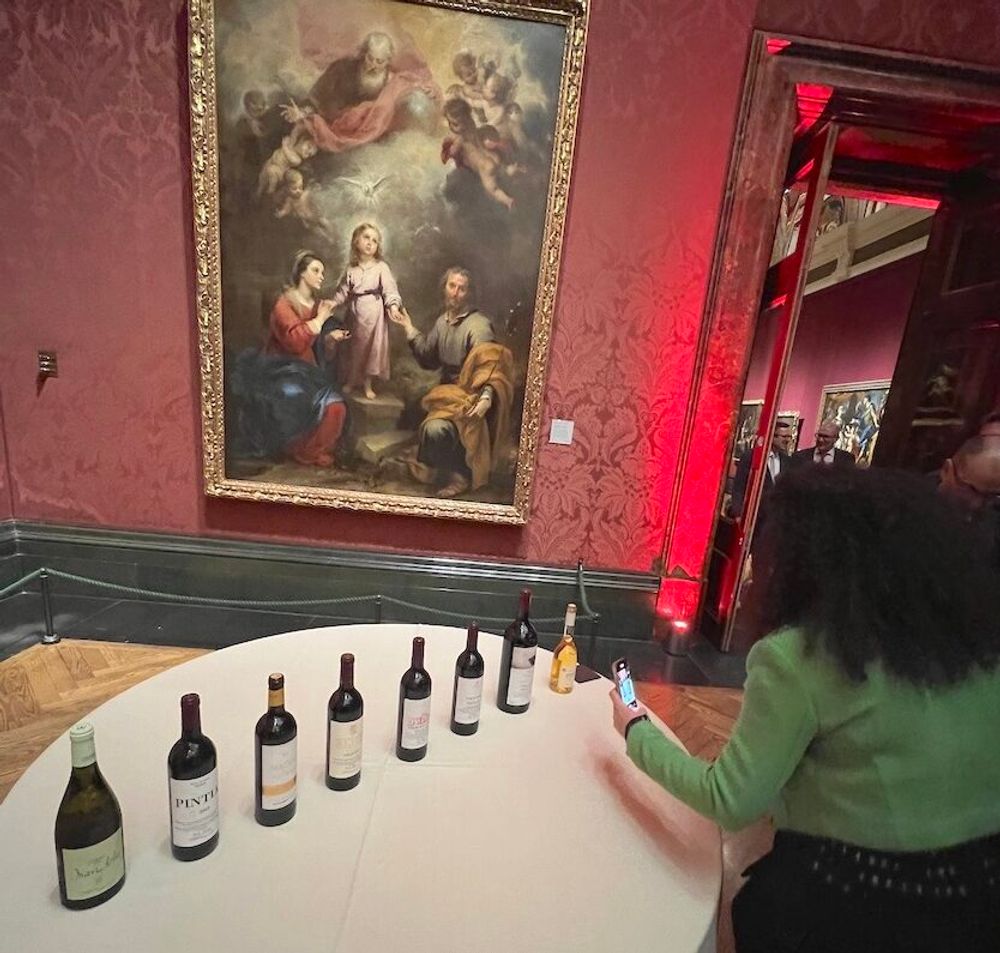
Five-year aged Iberico ham was carved in front of priceless Velázquez as flutes were refilled with Champagne Jacquesson cuvée n° 745.

A banquet followed, made all the more extraordinary by the fact that it was cooked and served in one of the world’s finest art galleries. There were eight wines served, all Spanish except for the two Hungarian Oremus wines that bookended the flight, Mandolás 2021 and Aszú 5 Puttonyos 2017, both displaying vibrant citrus notes (the latter perfectly picked out by a Meyer Lemon Sorbet as part of dessert) and excellence, with 170 gms residual sugar separating them.
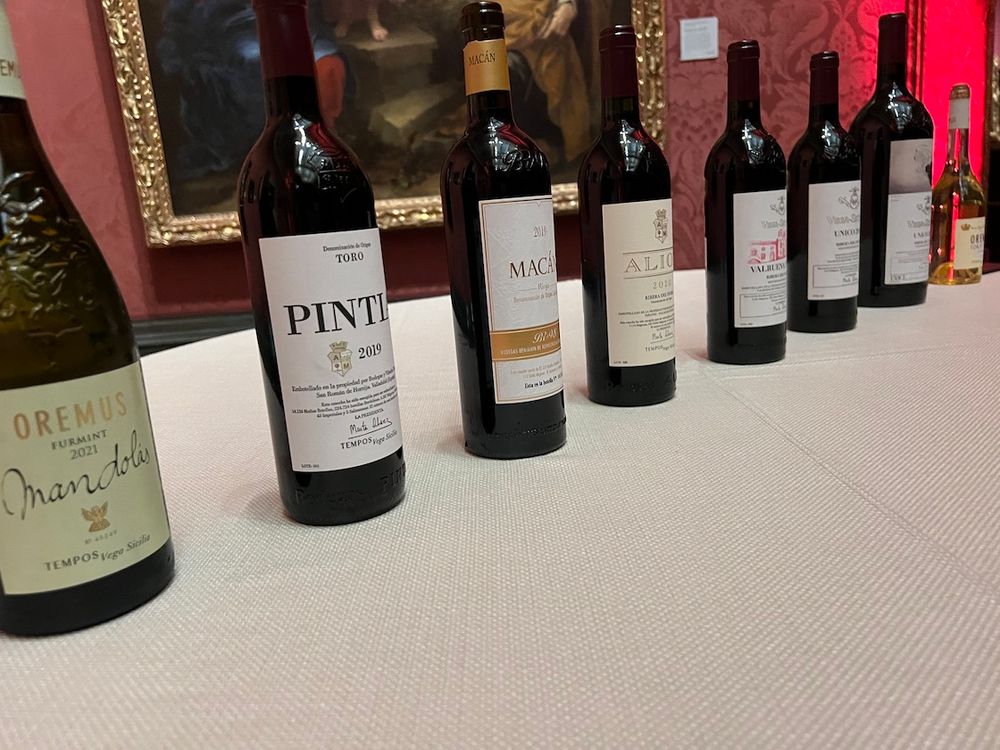
What also separated the two Tokaj wines were wines from Toro, Rioja and Ribera Del Duero: Pintia 2019, Macán 2019, Alión 2020, Valbuena 5° 2019, Unico 2014 and Unico 2004 (no Unico Reserva Especial).
The first four wines showed youth and primary fruit, some unintegrated oak, but all were approachable now and developed well over the three hour course of dinner. Pintia 2019 was 15% abv as you might expect from Toro, especially in this warm vintage, but the alcohol was nicely tamed and subsumed in layers of full-bodied fruit and dense chocolate notes. I got to like Macán 2019 more and more as the evening wore on, it’s a vintage with great ageing potential in Rioja and this wine has oodles of big, ripe, juicy berries and firm acidity to facilitate the long haul. Gonzalo Iturriaga de Juan, group technical director Vega Sicilia confessed to being particularly proud of Alión 2020, partly because his recent appointment to the estate meant this was one of the few wines that were totally his, but also because it is a wine made during the pandemic. Away from his family, he explained that the isolation meant he could totally focus on this wine, and boy does this wine have focus. Whether the 100ml of rain which appeared in the middle of this vintage was accountable or the isolation but is is an Alión with way more elegance at this stage of life – a contemporary one with finesse, balance and lovely tension running throughout.
Valbuena 5° 2019 was another standout of the evening and a wine I would buy alongside the Mandolás if I was purchasing for a wine list today. Complex and full of contrasts, being made from a younger part of the vineyard on limestone soils helps bring elegance to this wine and make it more approachable in youth. It has a sweet floral nose of black petals, with a hint of spice and black fruit. The mouthfeel is immediately open and rounded, so fine and sleek, with fine, ripe sandpaper tannins, that almost caress the tongue. There’s a blueberry coulis edge to the fruit too which builds to a tidy, dry stone finish. I confess to having my glass re-charged.
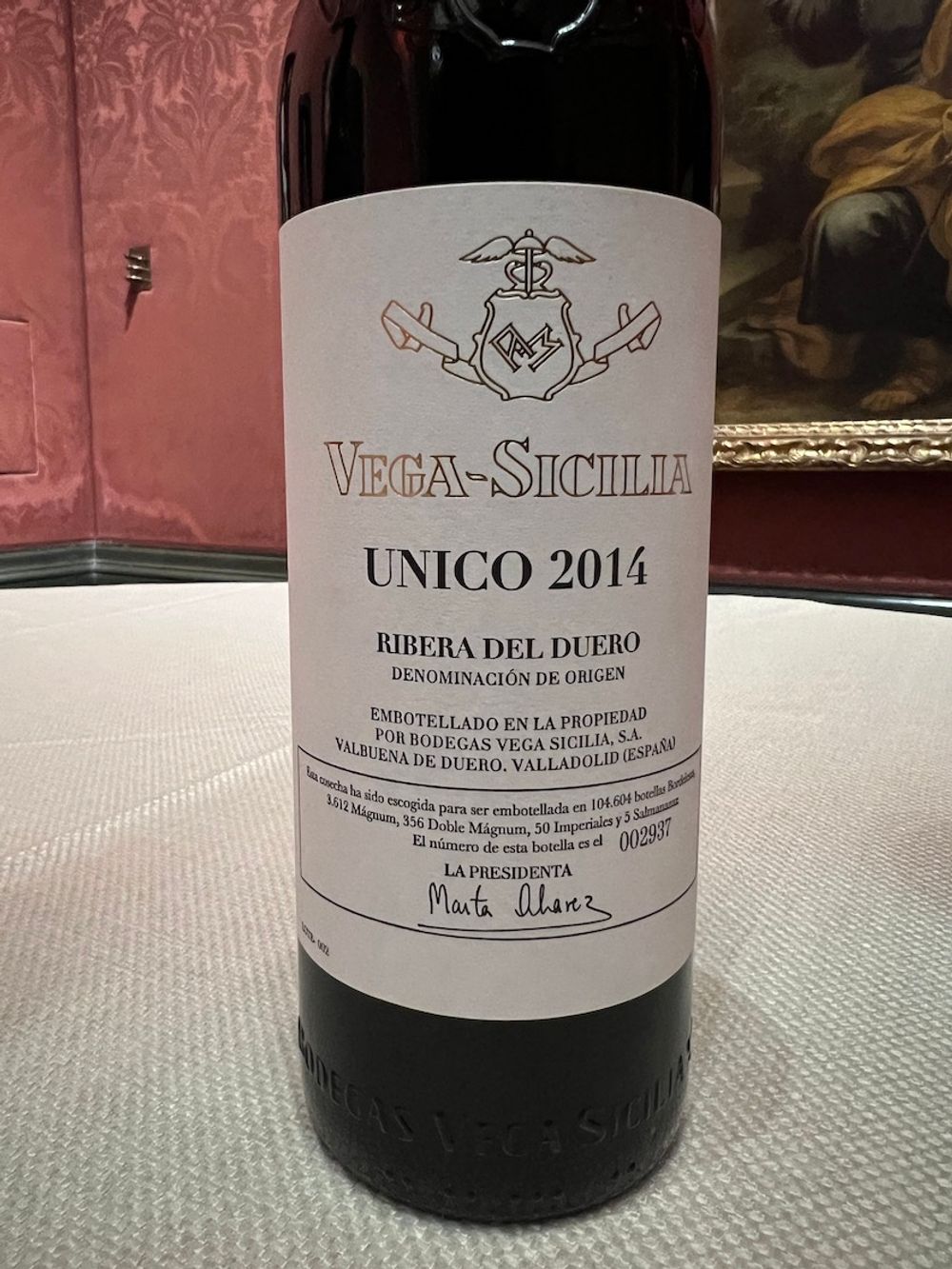
Subtle, elegant, well-defined, silky – there are many words that describe the new Unico 2014 which I did not find as subdued as the winemakers suggest with an attractive candy tobacco note amongst the lifted aromatics. Having said that the wine, at this stage of development, does not have the heady waft of spice (cardamon, fenugreek) as if you had just walked into an Indian spice shop, that was apparent when first tasting Unico 2010. On the palate, however, there is greater range with cranberry, liquorice root, wild strawberry, the palate completely approachable, rounded and ripe, complex with layers of flavour, ending on a lifted sweet pastry note and splash of vanilla custard. The balance and acidity are both broody and hefty. A magnificent Unico with a long and fruitful life ahead of it – buy with confidence.
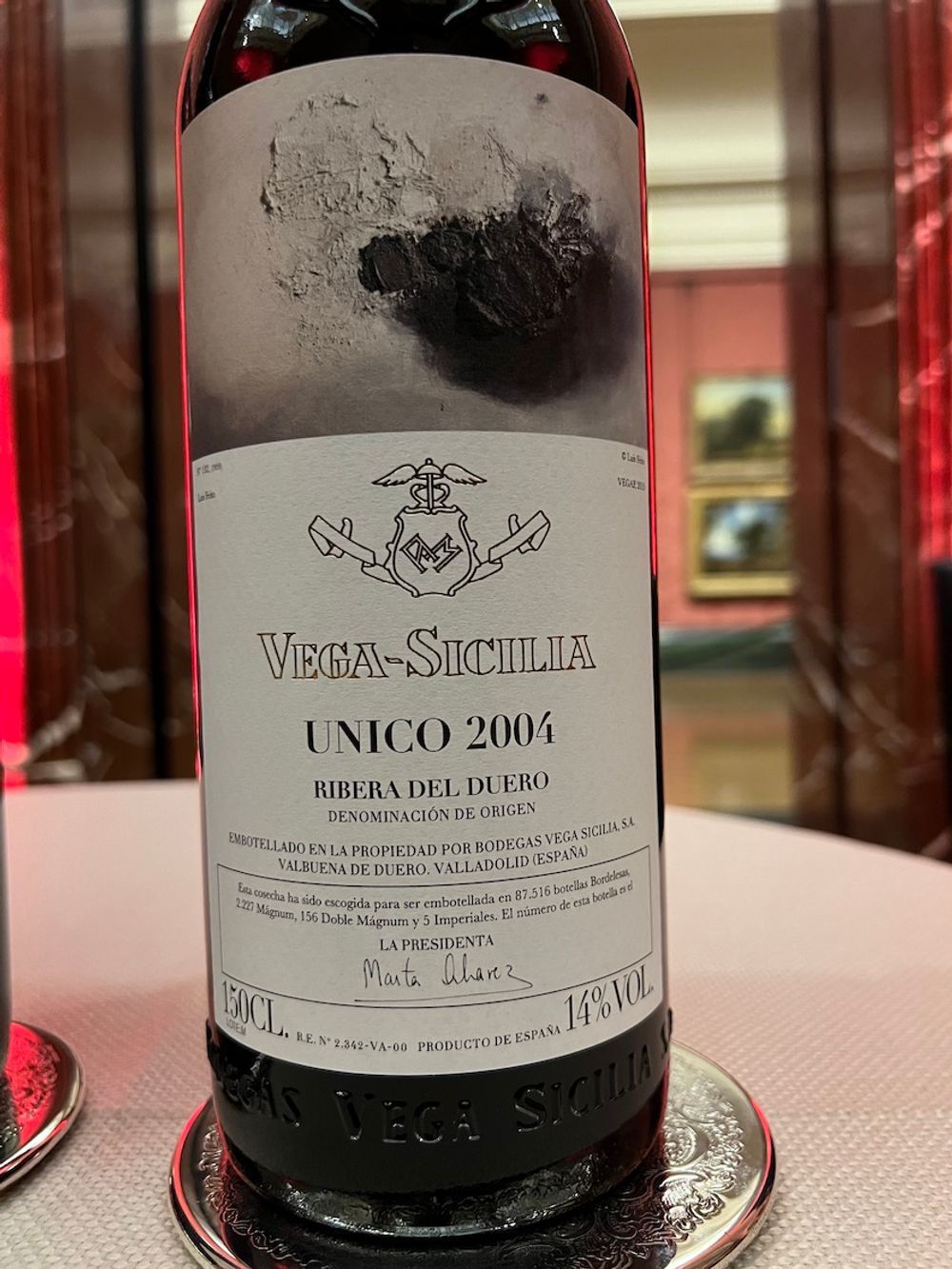
Artworks from Spanish artists are commissioned to grace Unico in magnum and larger formats
Of course Unico 2004 had settled into its drinking window with ease. Coming from a generous vintage, this is an opulent wine with a delightfully earthy nose and perfect balance – the acidity and tannin (and 13% Cabernet Sauvignon) fit to keep the wine alive for another 60 years, when Berkmann will hopefully be celebrating its 120th birthday. Just saying, it doesn’t look like I’m doing much that evening…
Unico 2014 and the other wines fro the Vega Sicilia portfolio are imported and sold in the UK through Berkmann Wine Cellars.









































